Caldwell Esselstyn started his professional career as a surgeon at Cleveland Clinic and quickly became interested in prevention instead of surgery. Sadly, he fell into the traps of a person looking at population data to find the cure for a disease. If you have watched the movie “Forks over Knives “ you can hear him n detail – but if you don’t want to poke your eyes out we will give you a capsule summary of a surgeon who went from the operating room to the pseudoscience table.
Dr. Esselstyn noted the risk of heart disease in rural China was low in the 1970’s – and presumed that they didn’t have a “western diet.” Now there are two flaws in his population statistics: First in the 1970’s in rural China most individuals were starving to death – it was the end of the cultural revolution and any source of food that could be found and eaten was. The second issue is if you examine data from The China Study you will see that heart disease mortality was lowest in the rural communities that were able to eat more meat. In The China Study (again, I promise this will be a topic later) – they used mortality statistics from the time during the end of the Cultural Revolution. Rural China was starving then, all trees had been used for fuel, there were virtually no birds left (combination of deforestation and hungry humans) and rice was used for the army.
Dr. Esselstyn then talks about Norway during World War 2, when they were occupied by the Nazi Germany, and how that heart disease diminished as the Norske were forced to eat a plant based diet. That was a great assumption to make, but when examining the data from Norway there are a few interesting factoids – Meat consumption dropped 60% but fish increased 200 per cent. Vegetables and potatoes increased but sugar decreased by half. And when the data is put to a microscope in 1942 and 1943 when mortality declined, animal proteins were still higher than before the war. It appears that Norway suffered from increasing fish (great source of Omega 3 fatty acids) and foraged for foods such as wild greens, grew and ate a lot of potatoes, but had a low amount of sugars and almost no margarine (I don’t know a respectable Norwegian today who cooks with margarine). The sad part of the war was the increase of mortality from infectious diseases – especially pneumonia (my mother’s cousin who fought for the resistance died of this, as did many of his comrades).
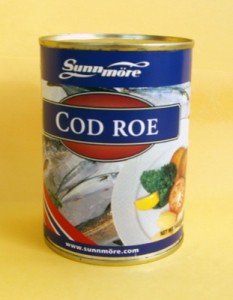
Norway in WW2 ate a lot of fish- and this roe was popular
Esselstyn then did a study of patients with coronary artery disease patients who did not have diabetes, high blood pressure, or currently smoke. His goal was a plant based diet with less than 10 per cent of calories derived from fat. This severe diet eliminated oils, fish, fowl, and meat. They were allowed to eat a plant based diet including grains, vegetables, lentils, and fruits.
He followed these patients for up to 12 years – his numbers are confusing as he started with 24 patients and six dropped out (leaving 18). One of the 18 died from his heart disease (leaving 17). At ten years there were 11 patients. They did angiography and reported a regression of 11 lesions with 14 remaining stable.
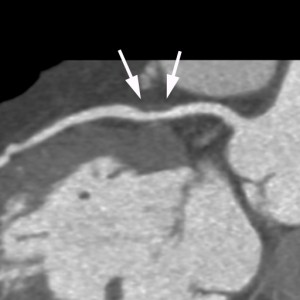
Angiogram- xray – of a plaque. Not enough to do surgery on though
Analysis of this study is this: coronary angiography is unreliable, and subject to wide interpretation as to the percent narrowing of a vessel from plaque. Taken from a slightly different angle a lesion that is critical can look normal. Also, it is the platelets on these plaques that do the damage – and a small change in the amount of platelets sitting on a plaque will change it. None of the angiograms of these individuals rose to the level of requiring intervention (none needed bypass, or a stent, or balloon angioplasty).
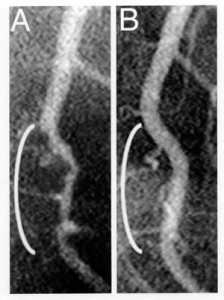
This is not plaque along the heart vessel on the left, but clot. It resolves not because the patient magically ate vegetables, but because he was placed on aspirin, or other drugs.
When any study talks about a “cardiac event” it means to most of us a heart attack. If you have a small lesion in a coronary artery and then that lesion accumulates a blood clot that is what a heart attack is. The blood clot (from platelets – a sticky component of blood that helps you clot ) blocks the flow of blood to the heart muscle. If the clot blocks blood flow for a long time then the heart muscle dies and you have a myocardial infarction, if it opens up then all you have is a heart attack. This has little to do with the size of the lesion, and more to do with the complex chemistry of the coagulation system. Hence, taking aspirin a day or Plavix is more beneficial.
The other major problem with the study is that these individuals were on lipid lowering medications. Dietary reduction of lipid level (Cholesterol and lipoproteins such as VLDL, HDL) is about ten per cent on average, but never more than twenty per cent. However, lipid-lowering medications – such as Crestor – can remarkably lower levels of the lipids. In addition, lipid-lowering medications are best for reducing inflammation. They are anti-inflammatory to blood vessels, meaning in addition to lowering the lipids and cholesterol, their main effect is to reduce the chance of having a “coronary event.” The main reason for reduction in plaque with lipid lowering medicine is unknown – it is not the lipid, rather the transport vehicle – lipoproteins, that are the issue.
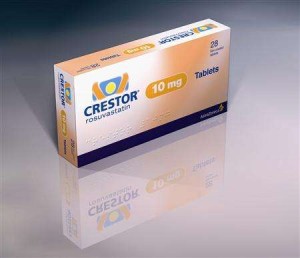
Crestor shown to be effective at decreasing the plaque in arteries
The final issue are my ancestors – Native Americans and Norwegians – who, when eating a diet high in fatty fish, have lower rates of heart disease. That is a population statistic, however, the science behind it is clear. Fish are high in omega-3 fatty acids, which Dr. Esselstyn wouldn’t like – but the omega 3 fatty acids are protective against heart attacks as well as raising the “good cholesterol” HDL, and have the same anti-inflammatory features that medications do.
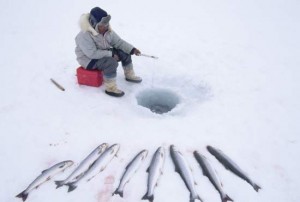
One of my cousins, preventing heart disease and eating fat
